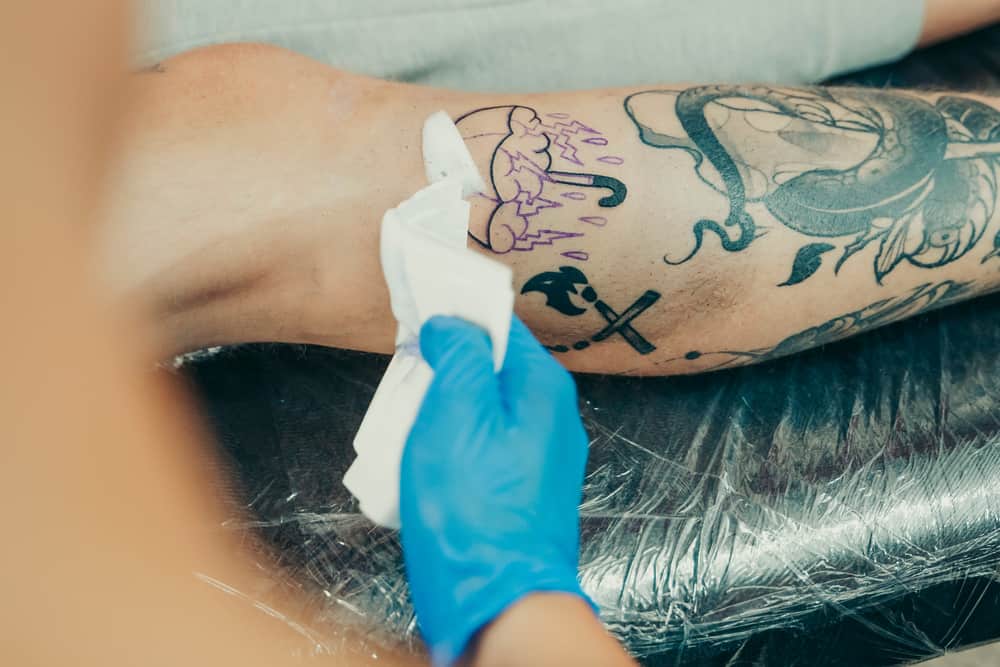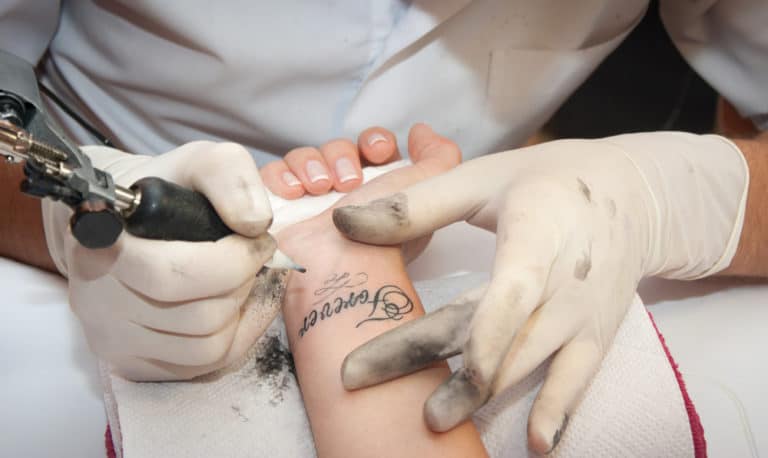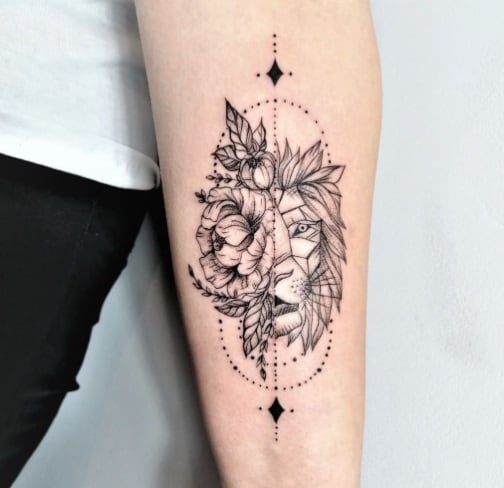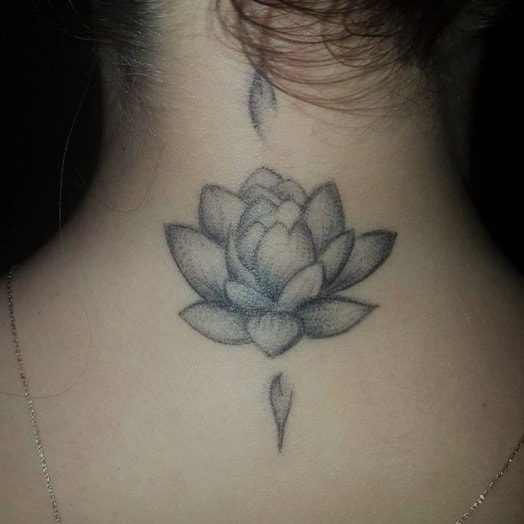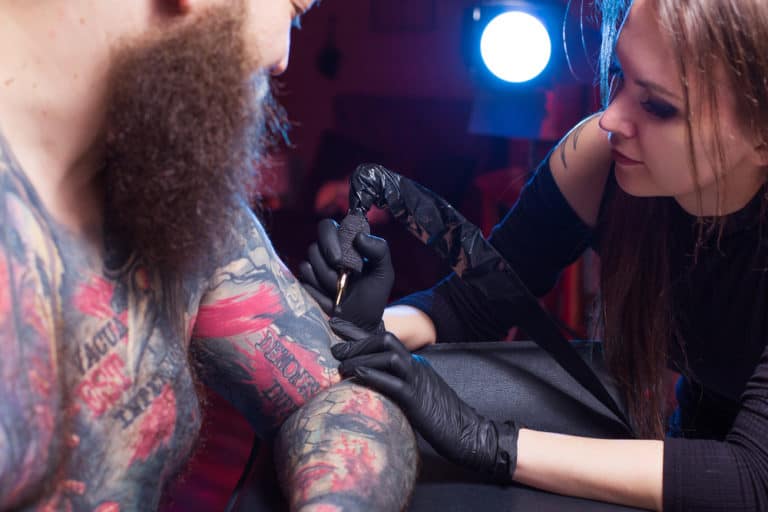Is Bar Soap Bad for Tattoos?
Since your tattoo is essentially an open wound, properly caring for your new tattoo is paramount. Your tattoo artist may have advised you to wash the newly inked skin; however, the products you use have a significant impact on your skin’s recovery time. You may be wondering whether your regular bar soap is bad for your tattoo.
The verdict on whether bar soap is harmful to tattoos is undecided; however, tattoo artists and enthusiasts agree the soap with which you wash your tattoo must be gentle, antibacterial, and free of any alcohol and fragrances.
After working up the courage to get inked, the last thing you want is to endure a painful tattoo infection. To avoid bacteria festering in your new tattoo, you must prioritize proper hygiene. You may be wondering how exactly you should care for fresh ink and whether the products you are using are safe.
How Does Soap Affect Your Tattoo?
Keeping your tattoo clean is the most important aspect of aftercare. Without proper maintenance and hygiene, your tattoo can bubble and become infected. This occurs when the scabs of your healing skin soften and become inflamed, and eventually lift from the skin. This can easily lead to ruining your new tattoo.
However, the products you use to cleanse your healing tattoo can be just as harmful as poor hygiene. Many soaps contain harsh ingredients that, if rubbed on a new tattoo, can cause itching, redness, rashes, and dryness, as well as delay your healing process.
One of the main ingredients in most soaps is fragrance, commonly listed as perfume or parfum. While smelling fresh is always welcome, the harsh chemicals that eliminate odor are the leading cause of allergic skin reactions. Since newly tattooed skin is essentially an open wound, these synthetic substances are likely to cause any number of adverse reactions, including dermatitis and rashes.
Tattoo enthusiasts warn against soaps that are ‘naturally fragranced’ since these products usually contain essential oils to produce a sweet scent or provide antibacterial properties. Essential oils can be hazardous to skin, as they are associated with inflammation, blistering, fungal infections and are even known to be phototoxic. Thus, you must avoid applying essential oils to your tattoo.
Like synthetic and natural fragrances, alcohol is a product ingredient that you should avoid at all costs. Alcohols disrupt the skin’s protective barrier, allowing moisture to escape and granting irritants entry into deeper skin layers. With long-term use, the sensitive skin around your tattoo will be prone to inflammation and irritation.
The verdict on whether liquid soap is better than bar soap is still out. Some tattoo enthusiasts argue that bar soap is a breeding ground for germs, which promotes wound infection. On the other hand, liquid soap allows for single-use pumps of product, which helps to avoid this dilemma. Those who prefer bar soap recommend purchasing an antibacterial soap exclusively for your tattoo.
The 10 Best Soaps to Use on Your Tattoo
Since a new tattoo is an open wound, your freshly tattooed skin is susceptible to anything it encounters; therefore, selecting a gentle soap right for your skin type is essential.
This cleanser perfectly balances providing antibacterial properties without damaging and drying your protective skin barrier. Furthermore, it is fragrance-free and pH-balanced, making this product ideal for sensitive skin types. Tattoo Goo’s unique formula keeps your skin clean and your tattoo looking fresh.
This foaming formulation is one of the most popular tattoo soaps on the market. It is designed to cleanse and moisturize your ink while protecting your moisture barrier. By adding aloe vera to the formula, this soap cools your skin while promoting hydration. The vegan, water-based line is extra gentle and free of potentially irritating ingredients, such as fragrance and parabens.
The ultra-gentle cleanser is ideal for daily use, and it is specifically designed to keep your skin healthy and clean after a tattoo. “Less is more,” Woo says. “Fewer ingredients equals better tattoo care and health, and it doesn’t overwork the new sensitive skin.”
In addition to the WOO Gentle Cleansing Soap, you should give the WOO After/Care Moisturizer a try. This moisturizer is specially designed for sensitive, freshly tattooed skin. This soothing moisturizer will promote healing if your skin is still tender, raw, or dry after getting tattooed.
This moisturizer contains soothing ingredients such as shea butter, Vitamin E, and chamomile to aid in the healing of your skin. This fragrance-free formula can be used for your everyday skincare routine as well as your tattoo healing.
Fresh ink is not the only skin that needs moisture. After a while, your tattoo will likely not be as bright as it was the day you got it. This cleanser contains exfoliants like glycolic acid and fruit extracts to lift and wash away dead skin cells that can dull your ink.
Furthermore, this formulation contains cucumber extract and hydrolyzed oat protein to improve the color and vibrancy of your ink. However, this cleanser should not wash new tattoos because its exfoliating formula is too harsh on healing skin.
Don’t be fooled by this product’s low price. This drugstore treasure is truly the gold standard. This household staple has potent antibacterial properties, killing germs while maintaining moisture. What’s best is that it is even gentle enough to use on new ink.
Dr. Bronner’s gentle soap aids in the healing and maintenance of your ink. It’s designed for babies, so it is guaranteed to be gentle on the skin. What’s more, it contains 90 percent organic ingredients, making it completely biodegradable and harmless to the environment. Keep in mind that it is relatively concentrated, so dilute it before using it.
This is the type of soap used by tattoo artists before tattooing the body to ensure that no germs enter your body from theirs. It effectively kills germs by using 30% alcohol and is widely used in various professional healthcare settings. It is not only effective for cleaning the skin, but it is also helpful for disinfecting medical instruments before and after use.
This soap is a favorite among tattoo artists because it is designed to remove dried blood and proteins from the skin. As an effective cleanser, it can be used to prepare the skin and clean tattoo equipment before sterilization. It is free from harsh chemicals and relies on lavender, pure vegetable oils, and glycerin as its main ingredients.
Though this cleanser was not created for tattoos aftercare, it was formulated for extremely sensitive skin, making it a safe bet for your ink. The cleanser is soap- and oil-free, and it is explicitly created to avoid common chemical irritants present in many liquid cleansers, which will help you avoid infection.
It’s dermatologist-recommended and gentle enough to use in your daily routine because it’s free of formaldehyde, lanolin, artificial fragrances, and parabens.
How to Wash a New Tattoo
Now that you have insight into which products are best at protecting and cleansing your new ink, you must familiarize yourself with the correct cleansing routine. Since the skin is susceptible, factors such as the water temperature, the length of your wash, and when you wash influence the condition of your tattoo.
When Should You Wash Your New Tattoo?
Showering within the first 48 hours is critical, as are gentle cleansers. Avoid soaps and harsh sulfates by using a wash that adds moisture. Most importantly, do not scrub; instead, use soft strokes with light finger pressure.
New tattoos are typically wrapped in a protective sheet to allow for initial healing and protect the tattoo from environmental irritants. Listen to your tattoo artist’s advice, but most recommend leaving the tattoo alone for at least eight hours before removing the tattoo dressing.
What is a Safe Water Temperature for Washing Your New Tattoo?
Do your best to avoid turning your shower temperature all the way hot or cold; instead, wash a new tattoo with warm water for the best results. That perfectly warm temperature is soothing and beneficial to the skin’s barrier.
While you may prefer the feel of hot water, tattooed skin should be washed with lukewarm water. Hot water causes dilation of blood vessels in the skin, resulting in flushing and inflammation.
How to Wash Your Tattoo for the First Time
At the end of your tattoo session, the artist will clean the area of your skin they were working on and wrap it in a bandage or film to protect it. To keep the dressing from leaking, you should only remove it a few hours after leaving your appointment. You may be hesitant to wash your new tattoo because it’s so sensitive, but you must prioritize hygiene to avoid infection.
Your first wash marks the beginning of your healing journey. After you’ve removed the bandage, cleanse the area with a gentle soap. Removing the dressing may be difficult and painful since your skin is susceptible after being inked. Once the wrap is removed, blood, ink, and plasma may leak out.
Don’t worry if your tattoo doesn’t look like you expected it to or if the lines appear fuzzy. Over the next few days, the excess fluid will be washed away, revealing your new, spectacular tattoo.
The Ideal Daily Tattoo Cleansing Routine
- The most crucial step in your routine is thoroughly washing your hands and cleaning under your fingernails. Handling your new ink with dirty hands or fingernails can lead to infections, delaying your healing process and damaging the skin.
- Using your fingertips, rub lukewarm in circular motions to dampen the skin area. Remember not to apply extremely hot or cold water since this can irritate sensitive skin.
- With your fingertips or palms, gently massage the soap onto the skin, awarding attention to areas there is a build-up of plasma, ink, and blood. It is essential to avoid using a washcloth or loofah to scrub your skin, as this is far too harsh on the sensitive area. Furthermore, any cloths are likely teeming with bacteria, making your tattoo susceptible to infection.
- Using lukewarm water and your fingertips, thoroughly rinse the area. Ensure that you do not leave any soap on the skin, as this will promote drying, which can further irritate and damage your protective skin barrier. However, try to give the area a thorough rinse without exposing the tattoo to water for too long since waterlogging your skin pores causes the ink to lift and drain.
- With a clean paper towel, gently pat the area of the skin to dry it. Alternatively, you may allow the skin to air dry if it is too tender to be dried using a paper towel. Be sure to avoid using towels or washcloths to dry the area, as their texture is too rough for sensitive skin, and they contain harmful bacteria.
- Once the area has dried, apply a small amount of gentle, fragrance-free moisturizer in a thin layer to the skin. Be sure not to lather too much lotion to the area since this can delay the healing process.
It would be best to practice this cleansing routine three to four times daily for the first month after getting inked. When your tattoo has finished scabbing and peeling, it is safe to return to a less intense cleansing routine.
How Can You Shower with a New Tattoo?
The tattoo healing process dictates how challenging daily tasks, such as sleeping, washing, and even spending time outdoors, will be. After getting fresh ink, it is recommended that you wait at least a full day before showering to avoid any damage to the tattoo.
There are some helpful tips to follow when showering during the first two weeks of your tattoo healing process. After that, you should be set to follow your regular wash routine in the shower.
- As with your tattoo cleansing routine, you must ensure that the water temperature is lukewarm. Showering with hot water may aggravate inflammation and swelling of the skin, and it can even open your pores and cause the ink to leach out.
- It is advised that you set the showerhead to a gentle stream. Heavier water pressure can cause a stinging sensation and even force the ink out.
- Although it is vital to maintain good hygiene during the healing process, you should avoid excessive showering for extended periods. Too much steam, water, and soap exposure may cause problems with your new tattoo and even dilute the fresh ink. Instead, opt for showering for shorter periods and less regularly.
- Likewise, you should avoid soaking in water while your tattoo is healing. For the first few weeks, try not to bathe or swim.
- The golden rule of tattoo recovery is to avoid anything that invites bacteria into the wound. Therefore, you should not wash your new tattoo with a loofah or a washcloth since these are known to be teeming with germs.
Conclusion
Tattoo enthusiasts are divided on whether bar soap is harmful to tattoos. Liquid soap allows for a single-use pump of product, which avoids contamination. You may opt for bar soap if it is an antibacterial product that you exclusively use on your tattoo. However, both sides agree that you should use a gentle, antibacterial soap free of alcohol and fragrances.

